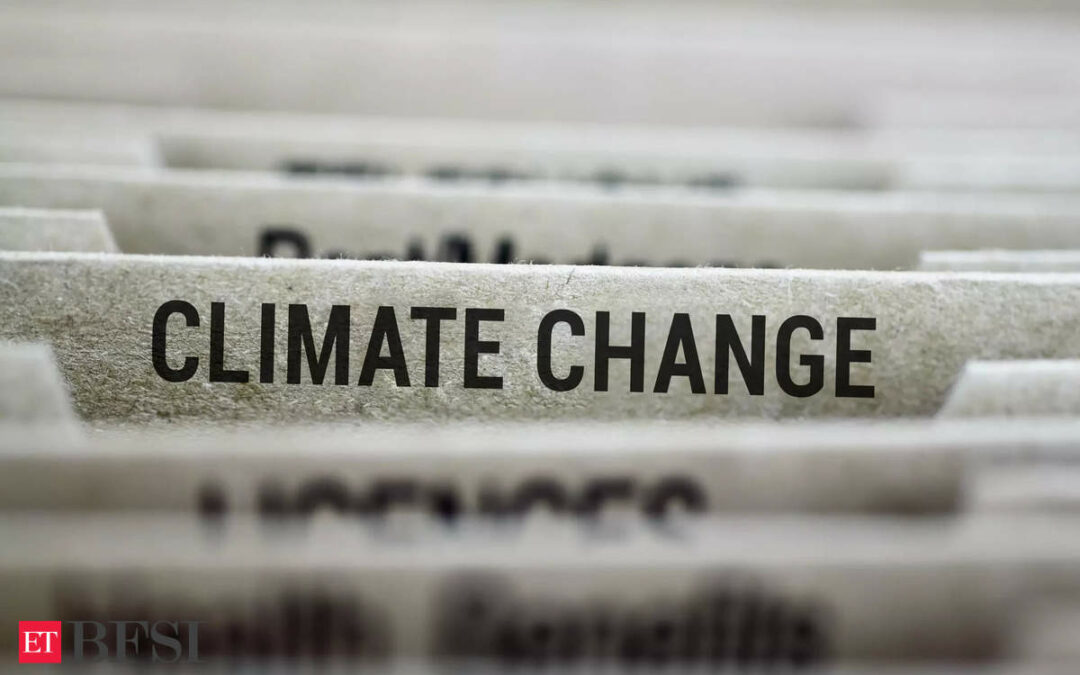The Reserve Bank of India (RBI), in February, took a significant step towards integrating climate risk considerations into the country’s financial landscape by releasing its draft guidelines on the Disclosure Framework on Climate-related Financial Risks. This move is crucial for India, not just as one of the fastest-growing economies but also as a nation highly vulnerable to climate change, with approximately 2.5-4.5% of its Gross Domestic Product (GDP) at risk annually as noted by RBI.
To achieve India’s ambitious growth objectives and fulfil India’s Nationally Determined Contributions, green finance is imperative. Climate risk disclosure frameworks work in complement with policymaking to support India’s net-zero target and are also pivotal in guiding companies and investors to navigate the opportunities and risks posed by climate change.
The introduction of the disclosure framework is a laudable first step, signalling a concerted effort towards addressing climate risks and fostering climate action within the financial sector. These disclosures are poised to accelerate the evolution of Environmental, Social, and Governance (ESG) considerations in financial markets. Modelled on global standards like the Task Force on Climate-related Financial Disclosures (TCFD), they promise interoperability of data (especially relevant for companies operating globally) and reduce operational burdens for banks. Moreover, they foster a level playing field not only for comparison within the domestic financial system but also internationally. The disclosure framework offers a forward-looking perspective, enabling a sectoral view of financial flows with a focus on climate risks. This can catalyse the shifts required, such as bolstering risk mitigation mechanisms like insurance and credit rating, as well as promoting the growth of green financial instruments like green bonds.
While the coverage of the framework is broad, it is encouraging that key financial institutions like National Bank for Agriculture and Rural Development (NABARD) and National Housing Bank (NHB) are included. This underscores the critical role they play, and their sectors represent towards climate risk mitigation and adaptation. Extending coverage to regional rural banks in the future could enhance last-mile rural resilience.
Though Scope 3 reporting remains optional, making it mandatory in the long term could provide deeper insights into supply chain emissions. Additionally, while transition plans are acknowledged, mandating their disclosure is an important forward-looking aspect that would help market participants evaluate leaders and laggards, thereby driving capital allocation towards climate-resilient businesses.
It is imperative for regulated entities to integrate considerations of climate risk and opportunities into their strategic decision-making. While the absence of mandatory targets is notable, their mention could serve as a catalyst for setting ambitious sustainability goals. However, providing regulated entities with a more comprehensive framework – be it a decision tree, a template, or set of sample questionnaire – could facilitate their transition towards compliance with the disclosure framework.
Implementing the disclosure framework will be a transformative step but cannot occur in isolation. Continued efforts, like recent consolidation of banks or ongoing focus on reducing non-performing assets (NPAs), that strengthen the fundamentals of the financial system are essential. Lessons from global financial institutions highlight the critical importance of internal alignment and buy-in for the success of such regulatory disclosures, emphasising that climate resilience should not be merely a regulatory exercise.
Furthermore, the existing corporate climate risk disclosure framework in India, which covers only the top 1,000 listed companies, poses challenges for regulated entities in accessing necessary sustainability-related information about their clients. This limitation could potentially impact the quality of financial institution disclosures as each regulated entity would be servicing thousands of additional companies beyond the mandated 1,000. Moreover, while the current framework focuses primarily on climate risk, future iterations may need to incorporate broader environmental and social considerations, such as nature, biodiversity, and resource use (like water), to align with evolving global standards.
Regulated entities will need to build capacity to comply with the new requirements. Organisations like Environmental Defense Fund can help financial institutions to build the expertise and tools to embrace transparency and proactively address climate risks. The RBI too could conduct workshops that help onboard regulated entities onto the disclosure framework.
The RBI’s disclosure framework represents a pivotal stride towards mainstreaming climate considerations within India’s financial sector. While progress is being made, the journey towards climate resilience demands sustained commitment and collaboration across stakeholders. By embracing transparency and proactively addressing climate risks, Indian financial institutions will not only safeguard their bottom lines but also contribute meaningfully towards building a sustainable future.
The writers are Hisham Mundol, Chief Advisor, India, EDF; Nicki Harrison, Director, Sustainable Finance, EDF and Vrashabh Kapate, Manager, Dairy Industry, EDF+Business.










